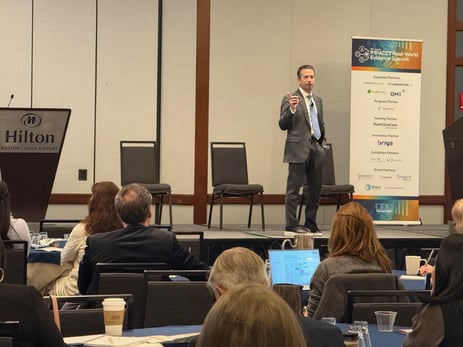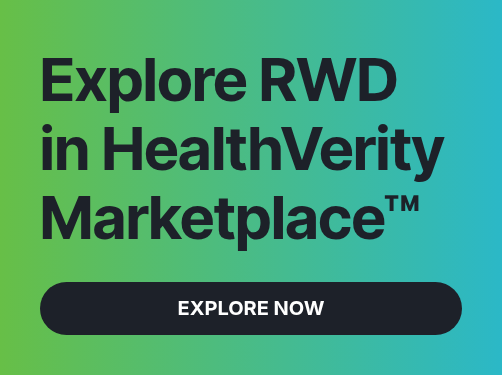Identifying the gaps in today’s real-world data
The 2025 IMPACCT Real-World Evidence Summit brought together leaders from biopharma, government, and data science to explore how real-world data is transforming evidence generation across the drug development lifecycle.

The three-day event in Boston focused on practical applications of RWD and AI to improve study design, regulatory confidence, and patient outcomes. At this year’s IMPACCT Real-World Evidence Summit, HealthVerity co-founder and COO, Andrew Goldberg, challenged attendees to leave with one actionable idea they could implement immediately in their RWE programs. His session, “Contextualizing patient pathways,” focused on a central theme: meaningful evidence begins with context.
Andrew discussed three questions that every real-world data leader should be asking:
- If I have access to more than 300 million lives, why do I see less than half my market?
- Why am I seeing a decline in medical claims data compared with last year?
- How can a marketplace model help solve these issues?
He explained that open medical claims represent less than 45% of total claims activity, leaving major gaps in visibility across care settings. Traditional approaches that rely on fragmented datasets, legacy tokenization, and inconsistent identifiers can create artificial “patient resets” that obscure true longitudinal patterns. Asynchronous data refresh rates distort real-world timelines and the absence of unstructured context, such as provider notes or lab values, weakens interpretability of the data.
Restoring continuity and context with taXonomy Pathways
Through a series of case studies, Andrew demonstrated how taXonomy Pathways, which is available through HealthVerity Marketplace, address each of these challenges. In the GLP-1 obesity case, taXonomy Pathways maintained continuity of care across diagnoses, labs, prescriptions, and physician notes, solving fragmentation. In heart failure and ulcerative colitis, taXonomy Pathways restored interpretability by linking structured and unstructured data to reveal clinical rationale, response, and safety signals that structured fields alone would miss.
taXonomy Pathways is purpose-built to integrate the largest claims backbone with labs, EHR and notes into contextualized therapy areas. This reveals the clinical nuance behind every claim:
- What changed with the patient?
- Why it mattered.
- How the patient responded.
- Where did the treatment path evolve?
Contextualized pathways create regulatory-ready, reproducible insights that speed time to confidence across development and real-world evaluation.







